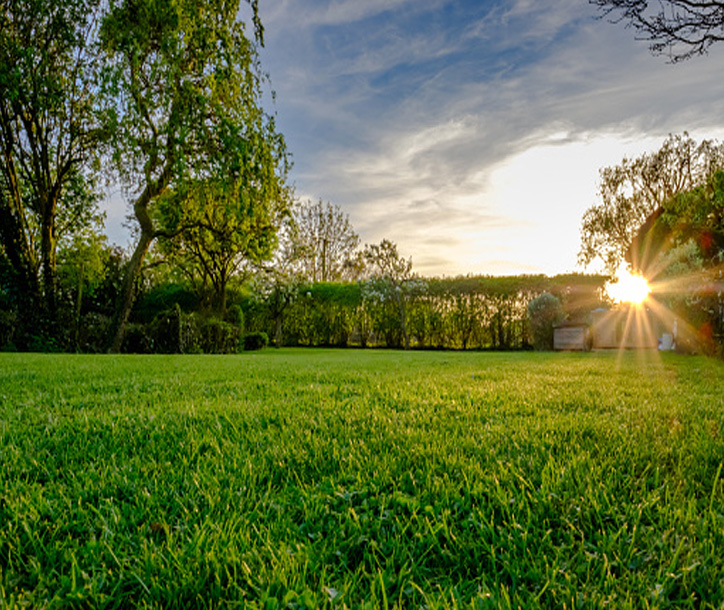
Seasonal Lawn Care in Western PA
Table of Contents
-
Spring Lawn Care Tips
- Controlling Weeds
- Importance of Pre-Emergents for Crabgrass
- How to Keep Crawling Pests From Entering The House
-
Summer Lawn Care Tips
- Preventing Red Thread
- Dollar Spot and Leaf Spot Disease
- Cinch Bugs: Summer Lawn Invaders
- Common Insects that Can Destroy Your Lawn
-
Fall Lawn Care Tips
- What is Aeration and Why is it Important?
- Grub Damage
- Fall Lawn Care Tips for a Beautiful Spring Lawn
- Importance of Fall Fertilization
-
Winter Lawn Care Tips
- How The Western PA Weather Affects Your Lawn
- How to Protect Your Lawn Against the Weather
- How to Prepare Your Lawn and Landscape for Winter
- Common DIY Mistakes and How to Avoid Them
Caring for your lawn throughout the ever-changing Pennsylvania weather can be tricky. A Superior Lawn Care, we have put together expert tips and advice from our staff on how to best care for your lawn throughout all four seasons.
Spring Lawn Care Tips:
In the spring, there are a variety of things to consider when caring for your lawn. From crabgrass and weeds to keeping crawling pests out of your house, there is plenty of work to be done to keep your lawn looking green and healthy.
Importance of Pre-Emergents for Crabgrass
In March, although the weather can still be chilly, it is a great time for homeowners to begin thinking about the health of their lawn. Crabgrass can tarnish the beauty of your lawn and take away from the beauty of the rest of your manicured landscape. While you wait for the weather to warm up, know that at Superior Lawn Care we are eager for the nice spring weather so we can begin caring for your lawn with our 2020 lawn care program.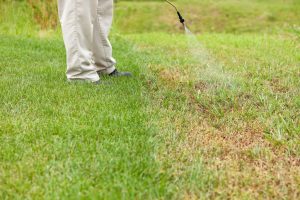
Our lawn care program is made of several parts that are broken down by steps. In March and April, we start on Step 1, laying the groundwork for your grass for the rest of 2020, using custom-blended fertilizer, broadleaf weed control, and pre-emergent crabgrass control. These steps replenish the nutrients that may have been lost over the winter season and help prevent weeds from popping up and blemishing your lawn come spring.
Why Pre-Emergent Crabgrass Control is Crucial to Your Lawn’s Health
Pre-emergents are part of Step 1’s treatment in our Five-Application Lawn Program to control crabgrass throughout the year. This weed-like grass will take very opportunity to grow in your yard in late spring, making it crucial to treat it now.
Crabgrass is resilient and does not require much soil or sunlight to thrive, allowing it to grow just about anywhere from the bare spots in your yard to the cracks in your walkway or driveway. Without proper watering or fertilization, crabgrass will take root and is difficult to control once it begins to grow. By treating it in March or April, you can help prevent future issues with crabgrass.
How Does the Pre-Emergent Treatment Work?
At Superior Lawn Care, we will apply a pre-emergent treatment to your grass to prevent crabgrass from growing throughout the spring and summer season. The pre-emergent works when the crabgrass seeds begin to sprout. With the treatment applied to the lawn, the crabgrass seeds will sprout into the pre-emergent treatment and are eliminate before they break through the soil of the lawn.
It is important to remember that preventing crabgrass in the early spring is easier than trying to get rid of crabgrass patches in the late spring and summer. Pre-emergents need to be applied within a certain window to ensure they provide the most effective results. Now is the time to give Superior Lawn Care a call to schedule a time for us to visit your home and answer any questions you may have about pre-emergent crabgrass control.
Controlling Weeds
As the snowy Pittsburgh winter begins to melt away, you may have already noticed unsightly weeds popping up throughout your lawn. You may be wondering why your lawn requires such careful care and consistent treatments to remain healthy, while weeds thrive and take over your lawn in almost any condition.
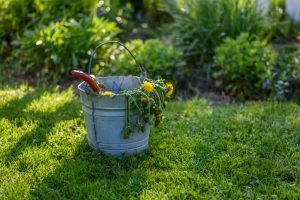
Weeds grow quickly and have a strong resiliency against heat and other harsh conditions, making them very difficult to control once they start growing. There are a variety of different types of weeds each thriving in different conditions. Some types of weeds prefer moisture, while others thrive better in a lawn that was cut down too low. Some thrive in ample shade while other like compacted soil. Common weeds that afflict Pittsburgh lawns include:
- Broadleaf weeds
- Dandelions
- White clover
Methods for Controlling Weeds Year-Round
Controlling weeds is a year-round endeavor. With Superior Lawn Care’s Five-Application Lawn Care Program, we provide treatments such as weed control and pre-emergent crabgrass control to keep your lawn weed-free and healthy throughout all season. Part of this program includes the application of a custom-blended fertilizer that is tailored to the need of your lawn along with a weed control treatment.
During March and April, we perform the first step of the lawn care program, applying a weed treatment that will effectively prevent and control broadleaf weeds such as dandelions and clover.
For May and June our weed treatment will concentrate on summer weeds whereas our treatment in July and August will focus on weeds that grow rapidly in hot, humid weather conditions.
My Lawn Looks Weed-Free, Why Should I Treat it?
As you may already know, weeds grow from seeds in the same way grass does. Before a mature weed dies, it will produce seeds that fall into the ground and lay dormant throughout the winter season.
Once the temperature of the soil reaches around 55-60 degrees, typically around March, these seed will begin to germinate. While you may think your lawn is weed free right now, it is important to remember that weed seeds can be tracked onto your lawn by shoes, pets, and event wind, ending up in the ground.
Importance Pre-Emergent Weed Control
The last thing any homeowner wants to see as the weather warms up is weeds popping up throughout their lawn. At Superior Lawn Care, we can use our pre-emergent weed control treatment to create a barrier around your lawn that will prevent weeds from growing and breaking through the soil of the lawn.
As part of our Five-Application Lawn Care Program, we will also reapply our broadleaf weed control throughout the year for a beautiful, weed-free lawn. Since these treatments do not last throughout the winter, it is crucial to have your pre-emergent weed control applied in the early spring before soil temperatures begin to rise. If the soil becomes too warm, the weed seeds will have the chance to germinate and begin to grow through the soil of your lawn. Once they begin growing, they can be difficult to control, so prevention is the best way to keep your lawn looking great come spring!
How to Keep Crawling Pests from Entering the House
In addition to the picnics, swimming, and other fun activities summer brings, it also brings along with crawling insects that can invade your lawn and your home.
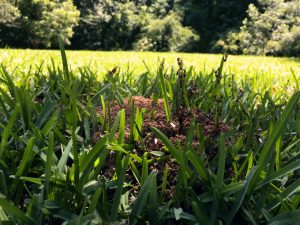
As the summer weather warms up, insects come out of their hiding places where they sheltered for the winter to look for food, shelter, and water, invading your home to forage. Common crawling pests in Pittsburgh include:
- Ants
- Spiders
- Fleas
- Mites
- Centipedes
Once insects enter your home, it can be extremely difficult to get them out, making prevention a crucial part of keeping your home pest-free. Don’t let pests invade you home, crawling over your furniture, floors, and countertops, let Superior Lawn Care help with our Pest Perimeter Control treatments.
What is Pest Perimeter Control?
Large or small, insects can easily get into cracks and gaps around your windows, siding, and doors as well as cracks in your foundation. Sealing these entry points with caulking or weather stripping and repairing cracks in your foundation can be helpful, but it is near impossible to find every single entry point that insects may use, especially if your home is older or larger.
Once insects get into your home, they not only become nuisance, but some can also become a health hazard creating unsanitary conditions in your home. Insects can also carry disease that can harm pets and people. IF the insects have a chance to hunker down and breed inside of the home, they can create an infestation which will require the services of a pest control professional.
Prevent Pests from Invading Your Home
Determining all entry points that insects may use to enter your home can be very difficult and it may be impossible to seal and cover every entry way. The good news is you can use our effective perimeter pest control program to prevent them from entering the home in the first place.
Our perimeter pest control program involves a technician who will spray around the exterior of your home to form a barrier that will prevent bugs from entering the home. We recommend that this spray be applied as many as eight time through the season to ensure that your home is adequately protected from pests.
Don’t put your home and your family at risk of dealing with the disease, inconvenience and gross factor that can come with a pest infestation. Allow Superior Lawn Care to protect your home with our perimeter pest control treatment!
Summer Lawn Tips:
Dog Days of Summer Lawn Care
Pittsburgh summers consist of hot humid days and rainy nights. With these hot conditions, your lawn can lose its healthy, lush texture as well as its bright green color. By following these lawn care tip put together by the expert staff at Superior Lawn Care, you can help your lawn thrive through the harsh summer conditions.
Feed Your Lawn
Just like people, your lawn needs nutrients to stay strong and thrive. With regular and frequent grass food feeding, your lawn will have the nutrients it needs to grow thicker and fuller. With a thicker lawn providing more shade to the soil, the soil will remain cool and retain moisture more effectively during the hot summer temperatures.
Hydrate Your Lawn
Consistent watering is another way you can keep your lawn looking its best. You should water your lawn early in the morning during the cooler temperatures to allows the water to soak into the soil more 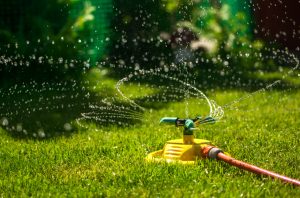 efficiently before the heat of the sun can evaporate the water. It is also important to water your lawn a few times a week in half-hour increments to ensure you lawn receives 1-1 ½ inches of water. It is recommended to avoid watering your lawn in the evening to help prevent turf disease and fungus. You can use a sprinkler or a hose, just be sure to water your lawn heavily and consistently each week throughout the summer.
efficiently before the heat of the sun can evaporate the water. It is also important to water your lawn a few times a week in half-hour increments to ensure you lawn receives 1-1 ½ inches of water. It is recommended to avoid watering your lawn in the evening to help prevent turf disease and fungus. You can use a sprinkler or a hose, just be sure to water your lawn heavily and consistently each week throughout the summer.
Don’t Mow Too Short
Mowing your lawn is a significant part of your lawn’s health, but if you do not mow correctly, you can end up damaging your lawn. When mowing your lawn, be sure to avoid cutting your grass lower than 3”. This will help to encourage new growth in your lawn. Also, avoid
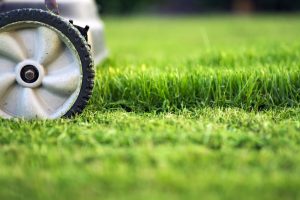
taking more than 1.3 of the total leaf surface off when mowing. By keeping the grass longer and providing more leaf area, your soil will remain cool and the larger leaf area helps to make photosynthesis easier. You should also mow when the weather is still cool to prevent burning the grass.
Proper mowing will encourage new growth, help the grass grow stronger roots, and will also help prevent weeding from popping up.
Keep Your Lawn Equipment Properly Maintained
Be sure to keep your lawn equipment maintained to ensure you get a clean cut. Dull blades will crush the end of the grass rather than cutting it, which can lead to brown grass that is more vulnerable to pests and disease.
Preventing Red Thread
While we are all enjoying the warmer temperatures of spring, the warmer temperatures do come with consequences. As the weather warms up, it creates the perfect environment for lawn diseases like red thread to develop.
This fungal disease appears on the lawn as pink circular patches in lawns and as it develops these patches produces strands that resemble red threads. This is a lawn disease that has become more prevalent in even well-nourished lawns in recent years.
What Causes Red Thread?
Red thread is known as hardy lawn disease and can thrive in a wide range of temperatures. It is most prevalent in the low-to-mid 60-degree range and is most severe during long periods of wet, cool, overcast weather. It can also thrive in temperatures between 40 and 80 degrees, which is the range of temperature we experience for many months out of the year in Pittsburgh.
Without the right mix of nutrients, your lawn is left vulnerable to disease like red thread. In many cases, lawns with red thread, also have a nitrogen deficiency. With a lawn care plan and proper fertilization, you can prevent lawn diseases like red thread. Another factor that can lead to red thread is poor drainage, which can be solved by aerating your lawn in the fall.
Controlling Red Thread
In addition to proper drainage and fertilization, other ways to control red thread include:
Water the lawn in the early morning to prevent prolonged periods of moisture through the night.
Mowing grass when it is dry minimizes the spread of fungal spores.
In most cases, we do not advise removing clippings after mowing, but if you have a lawn disease like red thread, removing the clippings can prevent the active spread of red thread.
Dollar Spot and Leaf Spot
The hot, humid summer weather brings on a variety of issues for your lawn, providing the perfect environment for lawn diseases to thrive and wreak havoc on your lawn.
What is Dollar Spot Lawn Disease?
Dollar spot lawn disease is fungal infection named for the 1-to 2-inch-wide small, yellowish dots it leaves all over the lawn. The sizes of the circles can be larger depending on the type of grass you have. With no treatment plan in place to get rid of or prevent the disease, the dollar spots will continue to grow larger, merging into even bigger yellow patches on your lawn.
If the humidity is high at night, you can expect dollar spot to be prevalent. Luckily, you can prevent dollar spot and other lawn diseases with a lawn care plan. Your lawn care plan should include fertilization as well as fall aeration treatment to remove thatch and increase airflow to your lawn. If you are currently dealing with dollar spot, it is best to contact a professional to assess the problem and treat for it.
Leaf Spot
Leaf spot, similar to dollar spot, is a common summer fungal infection that causes spots on your lawn. Leaf spot causes spots of brown grass to form on your lawn and as the infection spreads, the brown spots transform into a purplish-colored oval shape.
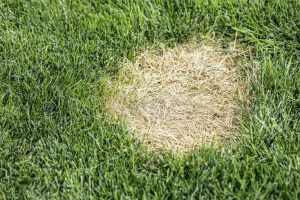
During the winter season, leaf spot spore lay dormant and become active as the weather warms up. They are attracted to moisture and can grow in the dew on your lawn as well as the excess moisture left behind due to overwatering or high evening humidity.
Leaf spot need to be treated quickly and effectively to prevent further damage to your grass. Many times the brown spot leaf spot leaves behind are mistaken for dry grass, leading to overwatering which only makes the issue worse. It is best to avoid store bought fungicides and contact a lawn care professional to treat the issue. This will ensure your lawn is treated properly and does not get re-infected.
Cinch Bugs: Summer Lawn Invaders
Unfortunately, during the summer season, you are not the only one who emerges to enjoy the sunshine. Warm summer weather creates a comfortable environment for insects, such as the cinch bug. Throughout June and July, cinch bugs should be your main concern over other insects such as beetles.
How to Identify a Cinch Bug
A cinch bug is very small and difficult to see. The young cinch bugs have a small red with white band whereas adult cinch bugs have a gray-black appearance with white wings that fold into the middle of their body.
How do Cinch Bugs Damage My Lawn?
Cinch bugs are born in late spring, feeding off the sap in grass and in large numbers they can easily destroy your lawn. After they finish feeding, they come adults, and produce eggs around August, starting the cycle all over again. These pests will overwinter in a war safe place, coming out to mate and lay eggs in spring. Cinch bug eggs are also damaging to your lawn, but it is not noticeable at first. As they go through several cycles, you will see a yellow-brown color appear in patches.
To determine if you have cinch bug, disturb the thatch on the ground when the sun is shining. Look for bugs that are greyish-black in color trying to burrow into the ground. Contact your lawn care professional immediately if you discover cinch bugs.
3 Common Insects that Can Destroy Your Lawn
While protecting your lawn from disease and sever weather is important, you also need to keep an eye out for destructive insects who will feed on your grass and plantings.
Three common destructive insects to be on the lookout for include:
White Grubs
White grubs are the larvae of beetles including Japanese beetles, May/June beetles, and oriental beetles. Grubs become an issue in late summer and early fall when they begin to feed on your grass to prepare to lay dormant for the winter. In the summer, they emerge to lay eggs.
Signs you have grubs:
- Soft or spongy lawn
- Wilted or brown patches of grass
- Lawn can be rolled back like carpet to expose grubs
- Presence of skunks, raccoons, or birds digging up the lawn searching for grubs to eat
If your grass isn’t looking great, test for grubs by grabbing the grass and pulling up. If your grass pulls away easily, and there are small, white, c-shaped insect on the ground, then you have a grub problem. You will likely see moles, raccoons, and bird digging in your yard looking for grubs to eat.
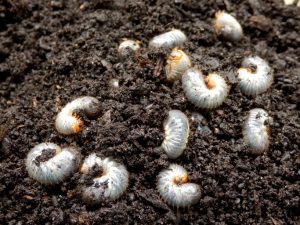
Superior Lawn Care offers an effective insect/grub application service that should be applied as soon as you see beetles in your yard. In most cases, only on application is needed to control the grub/beetle/grub cycle. If you notice that Japanese beetles are invading your ornamental plants and trees, Superior also offers a tree and shrub care program to help preserve them as well.
Japanese Beetles
Japanese beetles are 3/8 inches long with metallic-green bodies and shiny rust-colored wings. Their larvae feed on grass, plantings, and roots and are adults by July. This type of beetle will crawl up on to plants, grass, and ornamental trees to lay their eggs and eat. The eggs hatch by September and the grubs begin their destructive phase.
As they eat the roots of the grass in the fall, the grass can no longer take up water and nutrients, causing it to die in patches. Pull up on your turf and if it lifts easily, you have root damage. Another sign is white c-shaped grubs on the ground. Keep in mind, the adult beetles can fly, so you may not have any grubs in the yard when you see beetles eating your lawn.
Lawn Caterpillars
When a caterpillar population grows excessively, they can become very destructive to your lawn and plantings. This type of caterpillar mainly feeds on your grass, with the young ones feeding on the upper surface of the grass blades. The adult caterpillars eat entire sections of leaves, causing your lawn to have large brown spots.
A drench test can help you see if they are the culprit for the damage to your lawn. Combine dishwashing liquid and water. Pour the mixture over one square yard of your lawn, counting the number of caterpillars that surface. If you have more than fifteen per square yard it is likely that you have an infestation.
Fall Lawn Care Tips:
Fall Lawn Care Special Offer
During the falls season, you need to prepare your turf to survive the long winter while also providing it with the water and nutrients it needs to take advantage of the fall growing season and thrive again in the spring.
Save on Your Fall Lawn Care
Superior Lawn Care’s fall offer for our current customers, combines aeration, lime, and overfeeding. If you schedule your fall service now, you will save 6%. This special offer includes:
Aeration. This process works to loosen dry, compacted soil, and reduce thatch so your lawn can more efficiently take in air, water, and nutrients. This allows your lawn to grow a stronger root system and with the holes and plugs the process leave behind, it can also enhance the effects of overseeding by increasing the chances of germination.
Lime. Fall lime applications work to reduce acidic soil conditions to create an environment that encourages greener grass and stronger root development. With the right Ph balance, your lawn will also respond better to fertilizer.
Overseeding. Fall overseeding continually strengthens your grass by introducing new and more vigorous varieties of grass seed into your lawn. With cooler temperatures and enough moisture, overseeding is best done in September through November. Coupled with aeration, overseeding is ideal for filling in minor bare spots and thin areas caused by disease or drought.
When these services are combined, they help to ensure that your lawn is ready for the winter and will emerge green and healthy in the spring. This fall lawn care program is recommended for every lawn, every fall season to keep your lawn healthy all year round.
What is Aeration and Why is it Important?
When the cool breeze of fall blows in and summer begins to fade, it means it is time to start preparing your lawn for the fall season. An important part of preparing your lawn includes aerations.
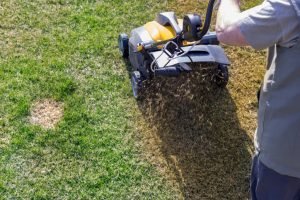
With this process, you can relieve the stress that summer placed on your lawn caused by high foot traffic from pets, guests, and children. Aeration also helps to rejuvenate your lawn after the stress of humidity and high heat.
How Does Aeration Work?
Aeration is done using an aerator to puncture small holes in your lawn. This is done to help remove thatch and alleviate compacted soil, allowing your lawn to take in more air, nutrients, and water. Common aeration tools include:
Plug/Core Aerator. This tool has hollow tines that are used to remove plugs of soil and grass from the lawn.
Spike Aerator. This tool is made of a solid tine or fork and is used to poke holes into the ground.
At Superior Lawn Care, we use a machine called a core aerator. This machine is equipped with hollow tines that we use to mechanically dig into the roots of the grass and remove plugs of earth. These plugs of earth are usually 1” to 1 ½” deep and are spaced about 4” apart and are deposited on the ground once they are removed. As the plugs decompose, they increase the microbial soil activity, reducing thatch.
Reasons You Should Aerate Your Lawn
If your lawn has never been aerated before, you may not be sure if your lawn needs to aerated. If your lawn meets any of the following criteria, our aeration services may be a great solution for you:
- Heavy Use. If your lawn receives a lot of foot traffic or vehicles parking on it during the summer, your lawn can become compacted.
- New Construction. If you have done new construction on your home, it is possible the construction traffic compacted your lawn.
- Spongy or Dry Feel. If your lawn is dry or spongy, you could have a thatch problem which can be alleviated by aeration.
Benefits from Aeration
Aeration is a critical part of Pittsburgh lawn care since much of the soil is hard clay. The hard clay and compacted soil do not leave enough room for water, air, or nutrients to efficiently reach the roots of the grass.
Without enough air, water, and nutrients, your lawn can suffer from various issues including:
- Uneven growth
- Loss of bright green color
- Increased risk of damage from to disease or cold winter weather
By aerating your lawn, the thatch and soil compaction issues are resolved to allow your lawn to receive nutrients, water, and air more efficiently. This helps to the lawn maintain a strong root system so it can resist disease and survive the harsh Pittsburgh winter.
How Do I Know if Have Active Grubs or Grub Damage?
As the fall weather cools your lawn from the stress of the summer heat, another threat known as grubs will arrive to destroy your lawn. Grubs will begin to invade your lawn in September and early October.
What you Need to Know About Grubs
Grubs are the larvae of beetles that hatch between late August and early October. Common beetles in Southwestern PA include:
- Japanese beetles
- May/June beetles
- Oriental beetles
In the summer season, beetles begin to attach to your grass and other plants to eat them. Once the beetles are satisfied, they will start to mate and then lay their eggs. These eggs will gestate over the course of about a month or two and then hatch into hungry grubs.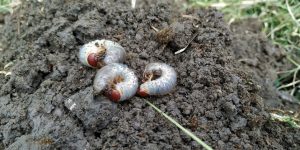
Throughout the early fall, grubs feed on the roots of your grass and then they burrow into the ground once winter arrives. When spring rolls around, the grubs will emerge, turn to beetles, and start the cycle all over again.
Signs of Active Grubs or Grub Damage
Grubs feed on the roots of your grass causing damage, such as wilted yellow or brown grass. Another way to check your lawn is by feeling it with your hand or foot. If it feels soft or spongy, you likely have active grubs or grub damage. You can also grab a yellow or brown section of grass and pull up. If it lifts easily and you see white, c-shaped insect on the ground underneath, then you have active grubs.
The presence of birds, skunks or raccoons digging up your lawn is also a sign of active grub damage. They will dig up your lawn in search of grubs to eat.
If you have noticed that you have any of the sing above or think that you have grub damage or active grubs, then be sure to contact Superior Lawn Care! We have a curative grub control we can apply to your lawn to help restore it back to normal.
Fall Lawn Care Tips For a Beautiful Spring Lawn
With these fall lawn care tips, you can prepare your lawn to endure the winter and revealing a lush, green, and healthy lawn in the spring. The right lawn care and maintenance can ensure that your lawn is prepared to ensure the harsh Pittsburgh winter:
Weed Control. By controlling the annual and perennial weeds now, you can expect a lush, weed-free lawn come springtime. Killing weeds such as dandelions now, you can prevent them from blemishing your lawn in the spring.
Fertilize. Fertilizing your lawn in the fall provides your lawn with the nutrients it needs for root and grass growth. This helps to create a stronger, healthier lawn that can stand up to the harsh conditions of winter.
With cooler temperatures and more moisture in the soil, fall is also a great time to repair any damage your lawn has from insects, disease, or summer stress. With our Fall Special Offer, we combine Aeration, Lime, and Overseeding treatments to promote growth and strength in your lawn for the winter season.
Importance of Fall Fertilization
Applying Late-season fertilizer on your lawn in the fall, also referred to as winterizer, is one of the most important fertilizations of the year. With fall fertilization, you can enhance the grass plants’ ability to concentrate on root growth while also recovering from summer stress such as disease and heavy foot traffic.
Benefits of Fertilizer
In the late fall, a high-nitrogen fertilizer is applied to help:
- Stimulate root growth
- Build up energy reserves in the grass plant for winter, so the grass plant can draw on them throughout the winter.
- Help grass retain its color when cool weather arrives
Strengthen the overall grass plant
The benefits of late fall fertilization will continue into the spring. Around March, when your lawn breaks dormancy, your lawn will look lush, green, and healthy. Fall fertilizer will also help your lawn fight early spring diseases such as snow mold, making fall fertilizer crucial to your lawn’s health!
When is Fall Fertilizer Applied?
In the Pittsburgh area, optimal timing for fall fertilization is late October through December. The nitrogen-rich fertilizer needs to be entrenched in the lawn, so it has enough time to start working before winter sets in.
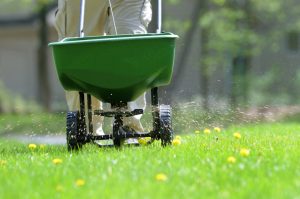
As part of our five-step lawn care program, our expert team applies the right products at the right time of year to keep your lawn healthy and green all year round!
Winter Lawn Care Tips:
How the Western PA Weather Affects Your Lawn
When the winter weather hits Pittsburgh, your lawn can be damaged by the snow and cold temperatures if it is not adequately prepared for the harsh winter temperatures.
Common lawn issues that are caused by Pittsburgh winter weather include:
Ice Damage
The ice and snow can cause your grass to freeze which makes the grass brittle and weak. Foot traffic or vehicle traffic on your lawn during the winter can cause major damage, leaving you with damage that you will need to repair when spring rolls around.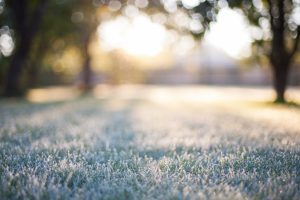
To help prevent this damage, keep your sidewalks and driveways clear of ice and snow, that way people are less likely to walk through your yard. You will also want to avoid parking vehicles on your lawn to avoid killing the grass and leaving room for weeds to grow in the spring.
Salt Damage
With freezing temperatures, many people use salt or ice melt to keep their sidewalks and driveways from becoming slippery. While these products make your outdoor surface safer to use, they can also damage your turf. The salt dries out the roots of your lawn which results in dead grass.
Using materials such as landscape fabric can be used to cover the edges of your lawn where salt damage is common. You will also want to limit the amount of salt you use or consider using an alternative like sand to provide traction without damaging your lawn.
Winter Desiccation
Desiccation is common in the Pittsburgh area, and is easy to identify. Desiccation is present when the ends of plant leaves look brown or wilted. They may appear burnt or look like they are falling off. This can occur when dry air causes moisture to escape the plant leaves or when the ground is frozen, making it difficult for the plant to draw moisture from the ground. This common in plants such as azaleas, hollies, and rhododendrons.
The first way to ensure your plants have enough moisture is to have Superior Lawn Care apply root fertilization in the fall, before the weather gets cold. You will want to prune away any salt damaged branches and apply mulch around the plants to help retain moisture near the soil. You can also place burlap around any exposed areas of the soil.
Snow Mold
This fungal disease grows on your lawn under the snow cover. Gray and pink snow mold most commonly occur in Western Pennsylvania.
Pink Snow Mold. Kills the crowns or roots of your grass, appearing in bleached-out dead patches that have a pinkish hue.
Gray Snow Mold. Kills the blades of the grass and is common when there is snowfall before the ground freezes, appearing with sclerotia, pinhead-sized light to dark brown structures on the leaves and crowns of the grass.
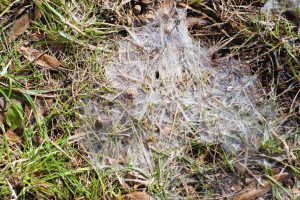
Properly mowing your lawn during the last cut of the growing season is a great way to prevent snow mold. For your last cut of the season, cut your lawn down to about 1 to 2 inches. This helps keep the grass from becoming matted down under the snow, just be sure to avoid removing more than one-third of the grass blade, cutting off more than that can stunt your lawn’s growth. You also want to avoid piling snow onto your lawn when shoveling sidewalks and driveway.
How to Protect Your Lawn Against the Western PA Weather
To prepare your lawn to survive the Pittsburgh winter, follow these lawn care tips:
Water Your Lawn
While you do not have to water your lawn as much as you did in the fall, adequately watering your lawn in November before the ground freezes comes with major benefits. Moist soil will stay warmer than dry soil throughout the winter, helping to insulate and protect your grass roots from freezing. Avoid overwatering since the plants will not absorb the water as fast as they do during the growing season.
Feed Your Lawn
The late fall or early winter season in Pennsylvania is a great time to fertilize your cool season grasses, like Tall Fescue or Kentucky Bluegrass. Late fall fertilizer called winterizer will provide your lawn with the essential nitrogen and other nutrients. Winter feeding helps to promote root development and growth and increases your lawn’s resistance to early spring lawn disease. Winterizer also strengthens your lawn to prepare for the stress of winter and provides it with a food source it can draw on during its dormancy for a healthy green lawn in the spring.
How to Prepare Your Lawn and Landscape for Winter
During the fall season, it is important to prepare your lawn to the brave the harsh winter by following these tips:
Keep Mowing
You need to keep mowing your lawn until it stops growing for the season. This allows your grass to receive the water and sunlight it needs to grow stronger. Toward the end of the growing season for the last two cuttings, you should mow your lawn on the lowest setting, just be sure to avoid trimming off more than one-third of the grass blade per cutting. Trimming too low can stunt your lawn’s growth and increase the chances of weeds and disease.
Clean up Debris from Your Lawn
Leaving your lawn covered in leaves will not insulate it from the cold weather, but it will block out the sunlight your lawn needs to grow, leaving your lawn brown and weak once spring arrives.
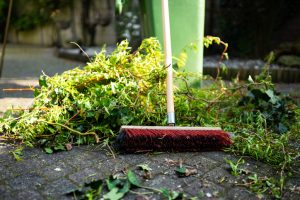
You can either remove the leaves or mulch them, to ensure your lawn receives adequate sunlight.
Fertilize Your Lawn
As you prepare for the winter season, it is important to continue feeding your lawn. By fertilizing in the fall, you provide plants with food reserves that they can draw on throughout the winter as they slow down their growth and switch their food reserves from the leaves o the roots. Your grass roots remain active throughout the winter, so when you fertilize your lawn, you are feeding these active roots, allowing them to store more nutrients for the winter. This helps to result in your lawn getting back to green faster in the spring.
At Superior Lawn Care, our Fall Special Offer can get your lawn ready for the winter months so you can enjoy a green and healthy lawn in the spring.
How to Know if You Have Moles
As the spring weather rolls in, it also brings moles to your lawn. These pests are a common problem in the Pittsburgh area as the weather warms up.
Throughout the seasons, these pests are searching your yard for food, such as earthworms. Earthworms are in your dirt in large numbers, providing the mole with a never-ending source of food underneath your lawn.
How do I Know if Moles Have Invaded My Yard?
Moles can wreak havoc on your lawn’s health, so it is important to identify and treat the issue as soon as possible. If your neighbor is having issues with moles, it is likely your yard has been invaded as well.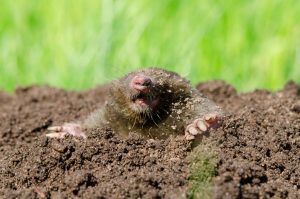
Physical damage such as tunneling on the surface of your property indicates that you have a mole problem. You will want to look for tunnels with small dirt mounds along the lines where the moles are entering and leaving to search for food.
You will not see the mole tunnels during the winter since they dig deeper underground during the colder season. As the weather warms up, you will see depressions in the ground caused nu tunneling as well as a series of holes.
Treating Your Yard for Moles
One of the first things you can do to treat your yard is to take a tamper or other heavy tool and tamp down the tunnels, which will fill them in with dirt. After the holes have been tamped down, take a trip to your local home and garden store to speak with some of their mole control experts. They will be able to assist you in finding the best type of traps for your yard. Three common mole traps include:
- Out O’ Sight Mole Trap
- Spear Mole Trap
- NoMol Mole Trap
For best results, we recommend using several traps to ensure your mole issue is resolved. If you have any questions about controlling moles or other destructive lawn pests, give Superior Lawn Care a call!
Common DIY Mistakes and How to Avoid Them
Properly caring for your lawn is no easy task, and with all the DIY tips out there, it can hard to tell which ones are the best to follow to keep your lawn healthy. At Superior Lawn Care, we have examined some of the most common lawn care mistakes and have provided you with some tips on how to prevent these mistakes and keep your lawn healthy and green!
Overwatering
Watering is crucial to keeping your lawn hydrated and healthy, but overwatering can cause damage. Watering your lawn too much can drown the emerging growth and can discourage your grass from developing a stronger, deeper root system. By overwatering your lawn, the roots will not grow down to take the water available deeper in the soil. This causes your lawn to become more dependent on supplemental water. Your lawn only requires around 1 inch of water per week, from either rain or watering to keep it healthy.
Overfertilizing
Fertilizing provides your lawn with nutrients it needs to grow, but over-fertilizing can lead to unsightly damage to your lawn. If you over-fertilize, especially with fertilizers that are high in nitrogen, you limit your lawn’s root growth and cause excessive leaf growth. Heavy fertilizer applications can also burn your lawn due to the salt build up in the soil. This salt build-up dries out your grass and causes your lawn to turn yellow or brown.
Superior Lawn Care’s Five-Application Lawn Care Program features custom-blended fertilizers that can be properly applied to your lawn throughout the seasons to help keep your lawn healthy.
Seeding Too Early
When the snow melts away, and spring starts up, you may see some faded patches on your lawn. It can be tempting to seed your lawn to restore those spots, but this will not work as well in the spring because the seeds will be less responsive.
When the winter season ends, you may notice some faded spots on your lawn. Fall is the best time to plant new seeds because the moisture and cooler weather create perfect growing conditions.
Our Fall Special Offer combines with overseeding and aeration to loosen the soil, allowing water, air, and nutrients efficiently reach the grass, and this also helps to enhance seed germination.
Don’t Mow too Short
Mowing your lawn is a great way to help keep it healthy and stimulate growth for a lush green lawn. If you cut your lawn too short, it harms the plants, limiting the ability of the grass blades to absorb sunlight and complete the process of photosynthesis.
Mowing too short can also weaken the root system and put your lawn at a higher risk for disease and weeds, so be sure to avoid mowing under 3”.
Expert Lawn Care Services for a Healthy Lawn
With our Five-Application Lawn Care Program, featuring services such as customized-blended fertilizer and weed control, our expert team can encourage growth in your lawn and promote a healthy root system to keep your lawn looking its best all year round!

